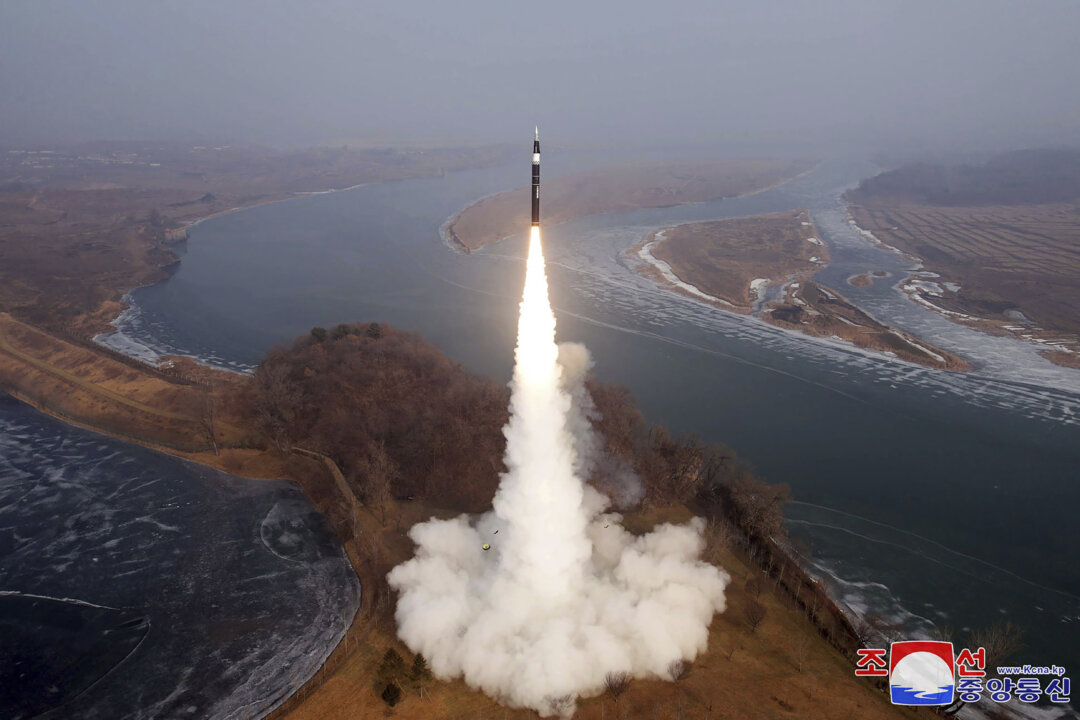North Korea has test-fired various intermediate-range missiles in recent years, some of which could reach U.S.-controlled Guam.
North Korea has claimed a missile it test-fired on Monday was a new hypersonic intermediate-range weapon which “only a few countries in the world” possess.
The leader of the North Korea, Kim Jong Un, was quoted by the state-run Korean Central News Agency (KCNA) as saying, “The hypersonic missile system will reliably contain any rivals in the Pacific region that can affect the security of our state.”
North Korea said Kim supervised the launch and they stated the weapon traveled 932 miles, achieving Mach-12 (12 times the speed of sound) before accurately striking a target in the Sea of Japan.
According to the state-owned Pyongyang Times Kim said, “The current test-fire proved without doubt that we are steadily upgrading the powerful new-type weapon systems like the intermediate-range hypersonic ballistic missile to cope with different security threats posed by the hostile forces against our state at present.”
“A few countries in the world might possess such a weapon system,” he said, adding that the missile was for self-defense.
UN Security Resolution Ban
KCNA said carbon fibre composite materials were used in the missile’s engine, making it able to, “effectively penetrate any dense defence barrier and inflict a serious military blow on the opponent.”
North Korea has test-fired various intermediate-range missiles in recent years, some of which could reach U.S.-controlled Guam.
Pyongyang said last year’s missile tests contained a hypersonic glide vehicle, a warhead designed to maneuver and evade missile defense systems.
In Sept. 2024 South Korea’s National Intelligence Service said North Korea had enough enriched uranium to build a “double-digit” number of nuclear bombs.
The spy agency said North Korea had about 70 kilograms (154 pounds) of plutonium, and an unspecified but considerable amount of weapons-grade uranium.
On Sept. 13, North Korean state media released the first-ever photos of its uranium enrichment facility, though it did not disclose the location.
North Korea’s nuclear program is banned under multiple U.N. Security Council resolutions.
On Monday, South Korea’s military claimed the missile traveled 685 miles before landing in the Sea of Japan.
South Korea’s joint chiefs of staff spokesman, Lee Sung Joon, said they believed North Korea was exaggerating the missile’s capabilities.
He said the South Korean military and their U.S. allies were analyzing data about the missile launch.
Was Timing Deliberate?
The launch took place as outgoing Secretary of State Antony Blinken visited South Korea, although it is not clear if the timing was deliberate on North Korea’s part.
It also occurred less than two weeks before President-Elect Donald Trump is inaugurated. He held three summits with Kim during his first term, and has said they have a personal rapport.

Blinken’s visit coincided with political turmoil in South Korea, after Yoon Suk Yeol was impeached over his decision to impose martial law on Dec. 3, blaming “anti-state forces.”
Yeol reversed the decision six hours later but is being investigated over charges of rebellion.
In a news conference on Monday, Blinken condemned the North Korean missile launch, which violates U.N. Security Council resolutions.
During the visit Blinken warned Russia might soon share space technology with North Korea.
Blinken said: “The DPRK [Democratic People’s Republic of Korea] is already receiving Russian military equipment and training. Now, we have reason to believe that Moscow intends to share advanced space and satellite technology with Pyongyang.”
The South Korean joint chiefs of staff said Monday’s missile launch posed a threat to peace and stability on the peninsula, which has been divided along the 38th parallel since 1953.
The Japanese Defense Ministry said the missile landed outside its exclusive economic zone, and there were no reports of damage to Japanese vessels.
The Associated Press and Reuters contributed to this report.

